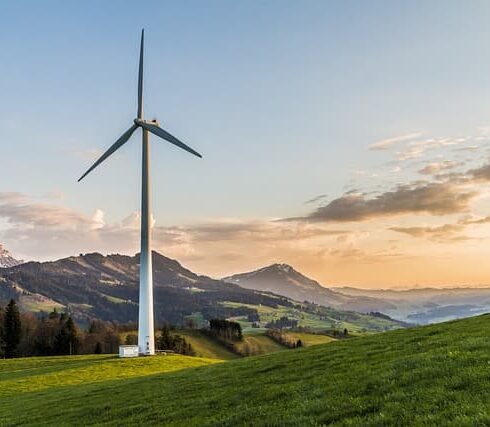Renewable Energy – Securing a Safer Future
Energy is at the heart of the climate problem and the key to solving it.
Much of the greenhouse gases that cover the earth and trap solar heat are generated in energy production, where fossil fuels are burned to produce electricity and heat.
Fossil fuels such as coal, oil, and gas are by far the largest contributors to global climate change, accounting for more than 75 percent of global greenhouse gas emissions and nearly 90 percent of all carbon dioxide emissions.
The science is clear that to avoid the worst effects of climate change, we need to cut emissions by nearly half by 2030 and achieve net zero emissions by 2050.
To achieve this goal, we need to end our dependence on fossil fuels and invest in alternative energy sources that are clean, affordable, accessible, sustainable and reliable.
Renewable energy sources, which are abundant around us from the sun, wind, water, waste, and heat of the earth, replenish themselves naturally and emit virtually no greenhouse gases or pollutants into the atmosphere.
Fossil fuels still account for more than 80 percent of the world’s energy production, but cleaner energy sources are gradually gaining ground. About 29 percent of electricity now comes from renewable sources.
Here are five reasons why accelerating the transition to clean energy is the way to a healthy and livable planet for those living today and for future generations.
Renewable energy is all around us
About 80 percent of the world’s population lives in countries that are net importers of fossil fuels – about 6 billion people who depend on fossil fuels from other countries and are therefore vulnerable to geopolitical shocks and crises.
Unlike fossil fuels, renewable energy sources are available in all countries, and their full potential has yet to be tapped. The International Renewable Energy Agency (IRENA) estimates that by 2050, 90 percent of the world’s electricity can and must come from renewable sources.
Renewable energy breaks away from import dependency by enabling countries to diversify their economies and protect them from unpredictable fluctuations in fossil fuel prices, while stimulating inclusive economic growth, job creation, and poverty alleviation activities.
Renewable energy is cheaper
Today, the use of renewable energy is actually the cheapest energy option in most regions of the world. Prices for renewable energy technologies are falling rapidly. Between 2010 and 2020, the cost of electricity from solar panels dropped by 85 percent. The cost of onshore and offshore wind power fell by 56 percent and 48 percent, respectively.
Falling prices make renewables more attractive to everyone, including low- and middle-income countries, which will account for most of the additional demand for new electricity. With lower costs, it is likely that low-carbon sources will account for a significant portion of new electricity supply in the coming years.
By 2030, cheap electricity from renewable sources could provide 65 percent of the world’s electricity supply. This would decarbonize the energy sector by 90 percent by 2050, significantly reducing carbon emissions and helping to mitigate climate change.
The cost of solar and wind power is expected to continue to exceed pre-pandemic levels in 2022 and 2023 due to general increases in commodity and transportation prices, but the International Energy Agency (IEA) argues that their actual competitiveness is improving due to much faster increases in gas and coal prices.
Renewable energy is a healthier alternative
According to the World Health Organization (WHO), approximately 99 percent of the world’s population breathes air with quality parameters that exceed permissible limits and threaten human health, and more than 13 million annual deaths worldwide are attributable to preventable environmental causes, including air pollution.
Harmful levels of fine particulate matter and nitrogen dioxide are primarily due to the burning of fossil fuels. In 2018, air pollution from fossil fuels resulted in health and economic costs of $2.9 trillion. This corresponded to an estimated $8 billion in health and economic costs. That’s about $8 billion per day.
Thus, switching to clean energy sources, such as wind and solar, helps address not only climate change, but also air pollution and declining public health.
Renewable energy creates jobs
Every dollar invested in renewable energy creates three times as many jobs as investments in the fossil fuel industry. The IEA estimates that a transition to net zero emissions would result in an overall increase in energy sector jobs: by 2030, about 5 million jobs could be lost in the fossil fuel industry, while about 14 million jobs would increase in the clean energy industry, resulting in a net gain of 9 million jobs.
In addition, energy-related industries will require an additional 16 million workers, such as new roles in electric vehicles and super-efficient appliances or innovative technologies such as hydrogen technology. This means that by 2030, a total of more than 30 million jobs could be created in the areas of clean energy and high-efficiency, low-emission technologies.
Organizing a just energy transition that puts people’s needs and rights first will be paramount to ensure that no one is left behind.
Using renewable energy is economically feasible
In 2020, about $5.9 trillion was spent to subsidize the fossil fuel industry. This includes direct subsidies and tax credits and the damage to public health and the environment that has not been factored into the cost of fossil fuels.
By comparison, about $4 trillion needs to be invested in renewable energy, including technology and infrastructure, by 2030. The cost would be about $4 trillion per year to achieve net zero emissions by 2050.
The initial costs may seem prohibitive for many resource-limited countries, and a significant number of them will need financial and technical support to make the transition. But investing in renewable energy will pay off. Reducing pollution and climate impacts alone could save the world up to $4.2 trillion per year by 2030. It could save the world up to $4.2 trillion per year by 2030.
In addition, efficient and reliable renewable energy technologies can create a system less susceptible to market shocks and increase resilience and energy security by diversifying energy supplies.





